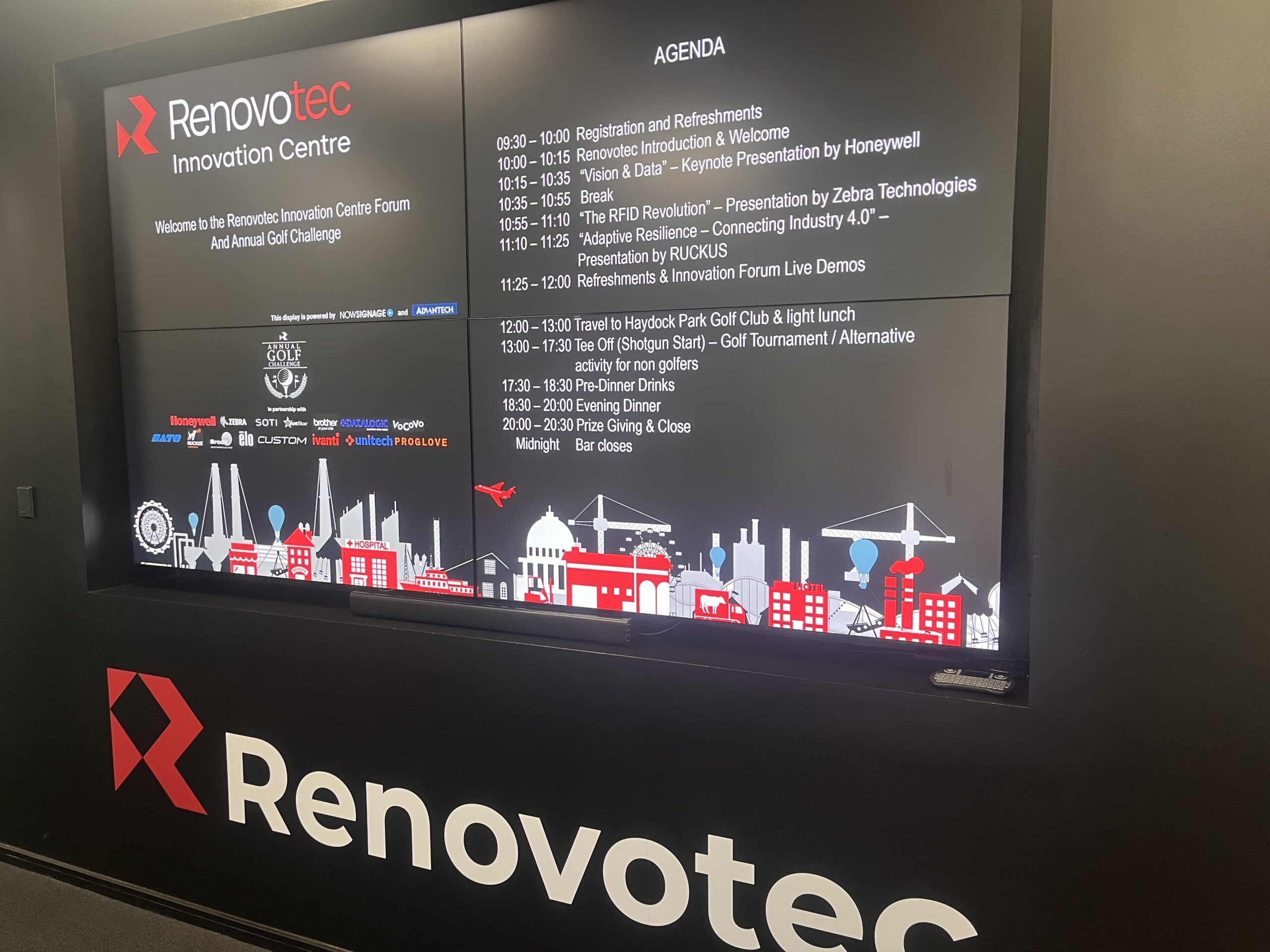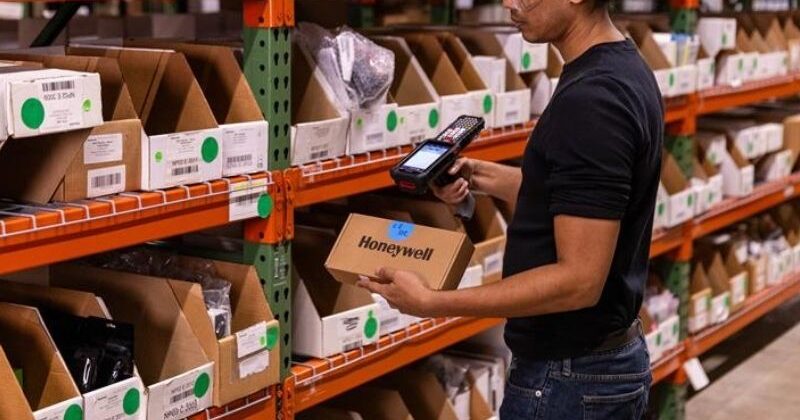

6 Ways to Boost Industrial Automation with a Machine Vision Solution
New technologies such as machine vision, AI, robots, automation, and detailed analytics are fast becoming crucial forms of industrial automation for warehouses, manufacturing plants and other industries that want to become more optimised working environments.
Machine vision represents one of the most exciting Industrial Internet of Things (IIoT) technologies to emerge with these goals in mind. Experts expect this technology to continue to grow in the next decade. Hence, making it a perfect time to consider how they can actually benefit your day-to-day supply chain operations.
Businesses that use machine vision experience increased efficiency, cost savings, improved quality control, enhanced safety and other benefits.
In a previous article, we talked about how it works and its common uses. Now, we focus on how this innovative technology can enhance automation in warehouses, factories and supply chains.
Leveraging machine vision systems in industrial automation
1. Process multiple types of data at once
Traditional barcode scanners have long been the backbone of warehousing, logistics and manufacturing data capture. But they are ultimately limited by their ability to scan and capture one piece of data at a time.
The pairing of modern camera technology and machine vision removes this limitation. Thus, enabling supply chain organisations to collect multiple pieces of data at speed. As it can be programmed to scan multiple barcode types at various angles, identify the number of items in a box and even flag items that are defective or damaged.
2. Identify and prepare for upcoming demand
Preparing effectively for upcoming demand can be challenging for organisations. Even with a wealth of historical data available.
Machine vision can improve supply chain management, delivery times, customer satisfaction, and adapt to market changes. As it can utilise various types of data to enhance warehouse operations and achieve greater success.
This data includes information on inventory, logistics, distribution, market trends, customer demand, economic climate, and weather. By analysing and processing this data, AI and machine vision can make informed decisions and optimize warehouse processes. This ultimately leads to improved efficiency, cost savings, and increased customer satisfaction.
3. Enhance quality control with 3D vision
When organisations use 3D vision capabilities with a machine vision system, they can capture accurate and detailed information regarding the precise shape of an object. Even if its complex or irregular.
This allows them to detect surface defects with higher accuracy and reliability. Therefore, ensuring products meet specific requirements and classify them based on specific attributes.
Businesses can use this information to detect errors early, reduce the risk of faulty products reaching the market and even compare the product with the 3D model or CAD design to ensure it meets specifications.
4. Meet compliance requirements with machine vision
Machine vision offers multiple benefits throughout the supply chain, be it within the four walls of a warehouse or across the manufacturing plant. For instance, one area of improvement it can deliver on is compliance.
The ability to identify and process multiple forms of data once enables organisations to meet health and safety standards for staff. As well as identify items or products that fail to meet quality assurance checks. And, even ensure specific company policies and procedures are being adhered to within the working environment.
5. Improved forecasting and planning
It isn’t just a technology for collecting and evaluating data in the moment. But also a powerful tool for businesses that want to use that data to project and forecast for tasks further down the process.
For instance, in a warehousing/distribution centre setting, machine vision offers the ability to scan items being placed into boxes. Then, accurately forecast how many boxes will be needed in order to fill the space within a vehicle waiting to be loaded. Machine vision also enables users to optimise their process. By automating their operations in a way that saves time, reduces costs and helps redirect workers to other tasks.
6. Process data at much faster speeds
As mentioned above, machine vision sets itself from traditional barcode scanners in many ways, including the ability to capture myriad forms of data simultaneously. Another key benefit is the sheer speed that this data can be captured when applied to the high-speed environments of the supply chain environment.
For instance, these fixed cameras can be positioned on the conveyor belt of a manufacturing plant, where they can scan each individual item and run through every programmed check – even if the item is passing by at speed. This offers the ability to maintain or increase the speed of automated processes while leveraging an enhanced data capture solution.
Summary
These are just some of the ways machine vision is already be used in warehouses or manufacturing operations to achieve multiple more optimised results. From capturing multiple forms of data at speed to meeting company and industry compliance standards, it is a proven technology that’s yet to meet its true potential.
As one of the leading names in end-to-end technology solutions for warehousing, logistics, manufacturing and the supply chain, Renovotec has the expertise and the experience to build a personalised solution that leverages many of the machine vision benefits we have explored above.
Contact one of our experts today to learn more about machine vision for your business.
Related Blog Posts

3rd Annual Innovation Forum and Golf Day
Last week saw the highlight of the Renovotec calendar; our 3rd Annual Innovation Forum and Golf Day.
Hosted at Renovotec’s first of its kind Innovation Centre in Newton-Le-Willows, the morning event brought together the Renovotec team, partners and clients to showcase the latest RFID and logistics tech, hear about the latest trends from Industry experts and experience […]
Retail Experts Share Top E-Commerce and Logistics Trends for 2025
Faki Saadi, Director of Sales UKI at SOTI and Richard Gilliard, Managing Director at Renovotec, explore the key trends shaping the future of the retail supply chain From Asda rolling out electronic shelf labels to Amazon launching ‘Prime Air’ a delivery drone service, retail brands are evolving and looking to the latest technologies to keep […]

Upgrading the supply chain with Honeywell voice and mobility solutions
How can you transform your supply chain operations and ensure competitiveness in the market with voice and mobility solutions from Renovotec and Honeywell?
Improving productivity and efficiency gains are vital for the profitability of businesses in the supply chain.
